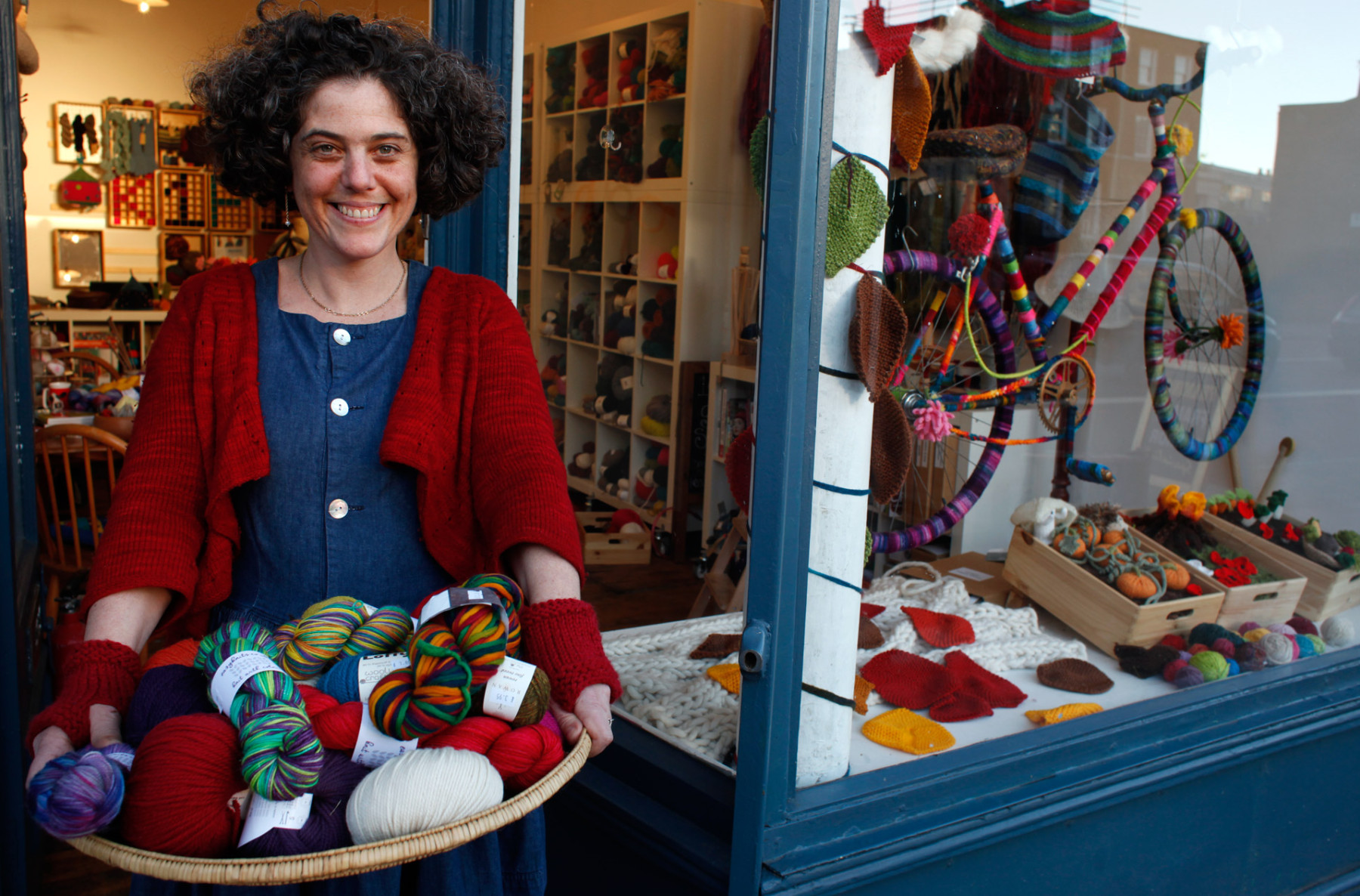In a change from our usual, this week’s post is being brought to you by my recently finished jumper – The Aase Sweater by Hanne Rimmen. Unaccustomed to writing newsletters or blog posts, Aase, the Sweater tells their story here in an interview with a Wild and Woolly Knitter which took place last week..

———————
Knitter: Hello Aase, Thank you so much for agreeing to do this. It’s my first time interviewing a sweater so I’m excited but also a little bit nervous.
Aase, the Sweater: Hi! Why thank you for asking me. It’s my pleasure to be here. I’m also a little nervous but mostly excited. I can’t believe I’m going to be in the Wild and Woolly Newsletter!
Knitter: It’s amazing to see you finally all in one piece and off the needles.
Aase, the Sweater: I’m feeling a lot better about everything since coming together at the end.
Knitter: Tell me, was it difficult or uncomfortable while you were coming together?
Aase, the Sweater: No, not really. There was this whole getting to know you thing – you know knitter-sweater trust issues. These things take time and in mine and Anna’s case, this was all cranked up because of the steek factor.
Knitter: You’re steeked? But you haven’t got a front opening. Where’s the steek?
Aase, the Sweater: Ok so ordinarily any patterning on a top-down sweater, happens in the yoke area above the separation of the sleeves, and then gets left behind in the body. Those two sections may look seamless in the fabric but they are very distinct in terms of garment construction. But what Hanne Rimmen managed to do when she designed me, was to rethink this yoke-body paradigm. She made the colourwork element start part way through the yoke and continue into the body. This is all the more impressive because she started with the European shoulder construction (where you begin by casting on along the shoulder line and proceed to knit flat down the back to the underarm, followed by picking up along the shoulder cast-on stitches and knitting flat down the front). And this turns out to be Hanne’s boldest and most brilliant move. My fellow sweaters will already know that knitters are terrible at managing stranded knitting in rows (in the flat) – their tension goes screwy, and there are all these endless chart-following headaches. TBH, I’ve had some cousins that never even made it through because of the knitter giving up with that stuff. And let’s say they do get into their stride with flat colourwork, it’s us sweaters that pay when they switch to circular knitting part way through, and their tension changes all over again. Who wants that? Not me! So HR’s ingenious solution was to add a steek channel where each of my sleeve holes was supposed to be, start circularly as soon as the colourwork begins, and then cut the sleeve hole open later on, so basically the knitter steeks their way out of the problem. And you know what? It turns out that it’s not the big deal that everyone says it is. It’s a really smart move.
In my case it also helped me and Anna find our way with each other. She can tend towards steam-rolling ahead over-excitedly without stopping to talk things through. And let me tell you, that can make a sweater feel a bit bamboozled, even disprespected. But while I was all kind of ‘hang on a minute are you sure this is a good idea?’, she was ‘come on, this is going to be great. It’s just like overlocking for knitters!’, and it actually was.
It was about trust. And this time we actually talked about it, and together we acknowledged that even though I’m knitted, my heritage comes from cloth, and let’s face it, cloth, cutting and fit have a long and rich history.
Knitter: I wanted to ask you about your colours. Were you involved in the discussion that went on around the possibilities?
Aase, the Sweater: I know that Anna had originally wanted to knit with the Rauwerk Sport in a deep purpley blue called Lavender. She’s had her eye on it for ages. But then when it came to deciding which shade to use for me she felt like colourwork wasn’t the right time to use it. There’s that thing about navy blues – they can come from different directions. And this one, which Anna used in the end – the Gebirgsee – it’s obviously a navy blue, but it’s got some greenish ancestory in there. I wasn’t convinced at the time but I think she made the right call. My colourwork has such a high contrast. And the blue she chose really hits it off with the cream. They just get along and at the same time the blue has this amazing presence. That purplish lavender one, really needed more of an expanse of its own... I guess I’ve learned that loving a colour isn’t enough of a reason to use it. It has to be the right colour for the project.
Knitter: Ok, can we talk about the sleeves, and the way that the colours go into a photographic negative version there?
Aase, the Sweater: Oh you mean that beguiling colour-reverse thing?

Knitter: Beguiling? Is that what you call it?
Aase, the Sweater: That’s what Anna called it. It became a bit of a joke between us… Reaching the Beguiling Sleeves, like a lakeside picnic spot we were aiming for on a road trip. Anyway, yes, the sleeves… So Hanne Rimmen’s next bold move after the sleeve hole steeking, is to give you a colourwork chart which reverses the 2 colours on the sleeve. And because it’s a kind of a busy pattern, it can take a moment to notice that that’s what she’s done. It’s like you know there’s something curious going on but there’s a delay before your eyes and brain work out what it is. Beguiling – you see?
Knitter: And was Anna obedient when it came to following the pattern?
Aase, the Sweater: Pretty much. She deviated with the cuffs and decided against using the motif colour (the cream). But that was obvious, right? We all know that cream cuffs on a sweater Anna’s wearing, would not have ended well. 54 years of rolling up her sleeves to keep them out of her supper, and she’s finally got the memo. Bracelet length sleeves and dark cuffs. Some people just weren’t meant to wear light colours near food.
Knitter: Is there anything else you’d like to share about your story, that we’ve maybe missed?
Aase, the Sweater: Well it’s not really a story thing, just that well, I wanted to thank you for pronouncing my name so nicely in the Danish way. A few people have got it wrong. It’s a small vowel difference, but well.. in English it makes a big difference. So thanks for that.
Knitter: And are you and Anna likely to be hanging together in the coming weeks? I mean if people want to come and see you?
Aase, the Sweater: Definitely. I thnk this whole experience has been really positive for us both. I know there’s been a bit of stroppiness from some of her other sweaters and talk of fickleness. That long-winded intarsia cardigan from last year had the chutzpah to talk about fast-fashion when Anna cast me off a month after starting. But that stranded-intarsia rivalry is as old as the hills. What can you do? Obviously I was a more practical option. I’m sure Anna will be back for the cardigan when the weather calls for it. But for now, yes I’m definitely around in the shop and happy to oblige if anyone wants to try on to check for sizing and other details.
WIth grateful thanks to the knitter and the sweater for making this interview possible.


1 comment for “There’s something about Aase”